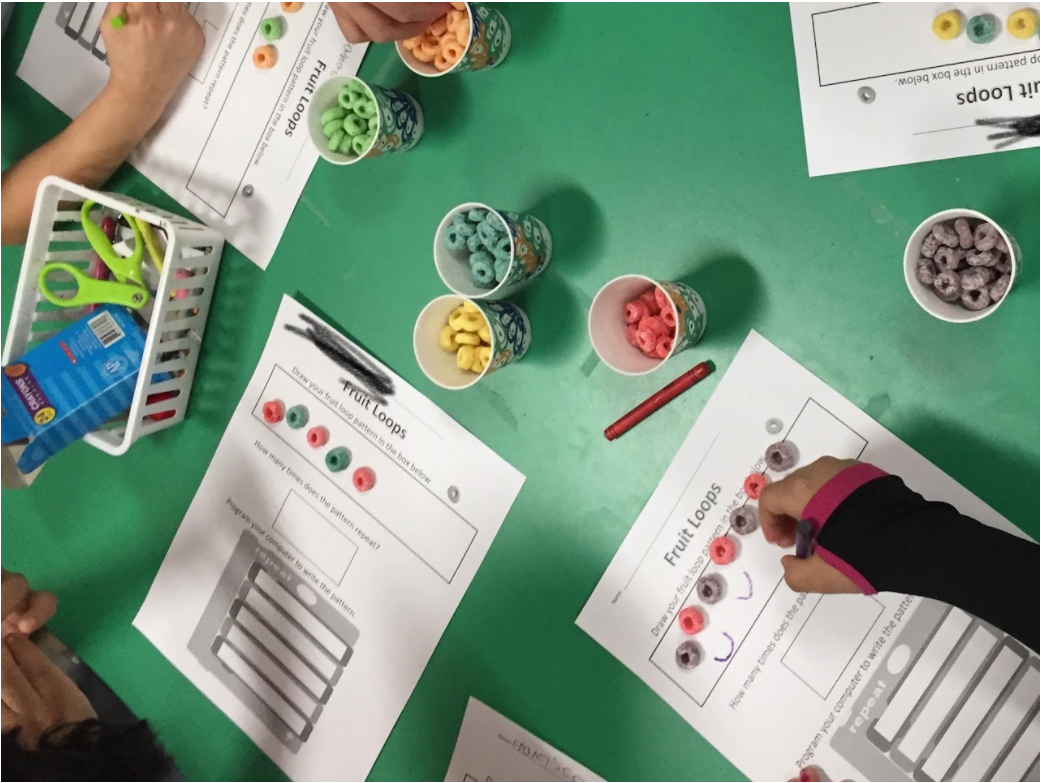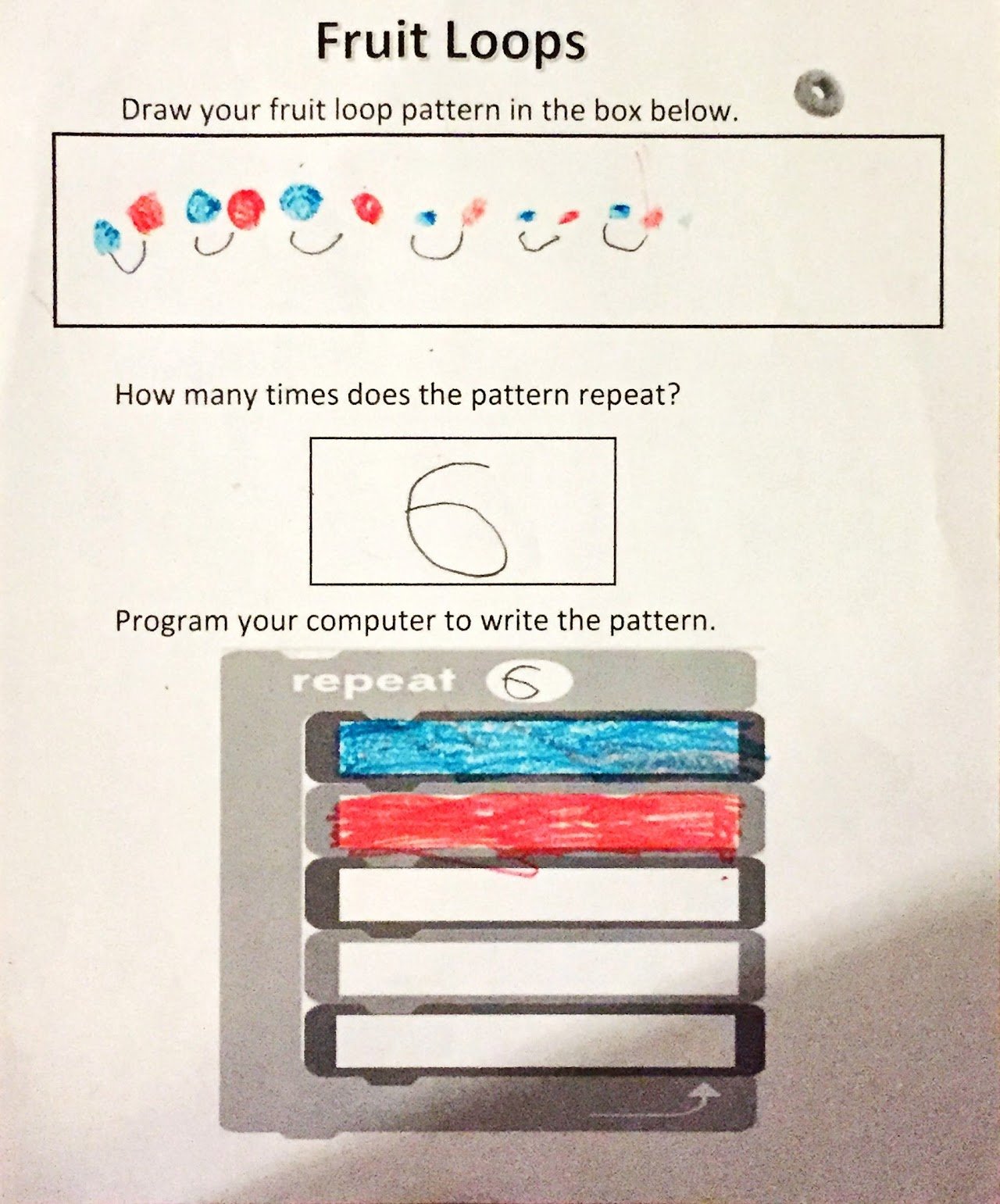
Fruit Loops Loop Lesson
Fruit Loops Loop
The goal of this lesson is for students to recognize loops and patterns, and to be able to create a concise algorithm.
In this lesson, students will learn to understand the importance of pattern recognition, and to decompose a larger problem by breaking it into smaller pieces.
At the beginning of each class the students sing the Alligator Song. This song reminds them to use the problem-solving strategy “step by step” and “think of what we need to do.” This enforces the concept that when they see a complex pattern, it can be broken down into simpler steps.
Next, the students are divided into centers. These centers include; the Fruit Loop Center, Loops Dance Center, the Cubetto Center, and Code.org Course A. At the Fruit Loop center, students create a pattern and count the number of times their pattern repeats. Then, this pattern is used to write a concise algorithm using the repeat block. A repeat block is a control block that tells the computer to loop the code the designated number of times before continuing with the rest of the algorithm. This teaches the student what the concept of ‘loop’ is in programming.
At the dance center, the students create their own loops by kinesthetically reenacting a loop pattern they designed using the repeat block and dance commands. By performing this “Loop Dance”, they learn how to break down a loop program into its repeated pattern.
At the Cubetto center, students learn how to write a program that does not contain loops, using a robot. The robot’s tasks are directly affected by the students programming. This is a tangible way for them to see how the program will affect the outcome of the robot’s movements and the students can debug the program if necessary.
Code.org Course A is a computer program which allows the students to apply everything they have learned about loops. Through the use of numerous puzzles, the students will have to use concise algorithms to complete tasks.
Each center gives the students an opportunity to learn, practice, and review loops from different perspectives. This helps them understand all aspects of loops.


